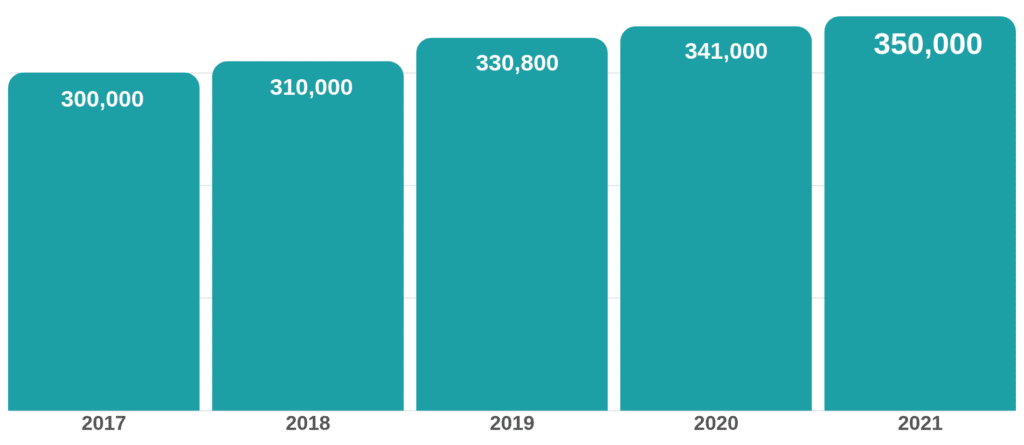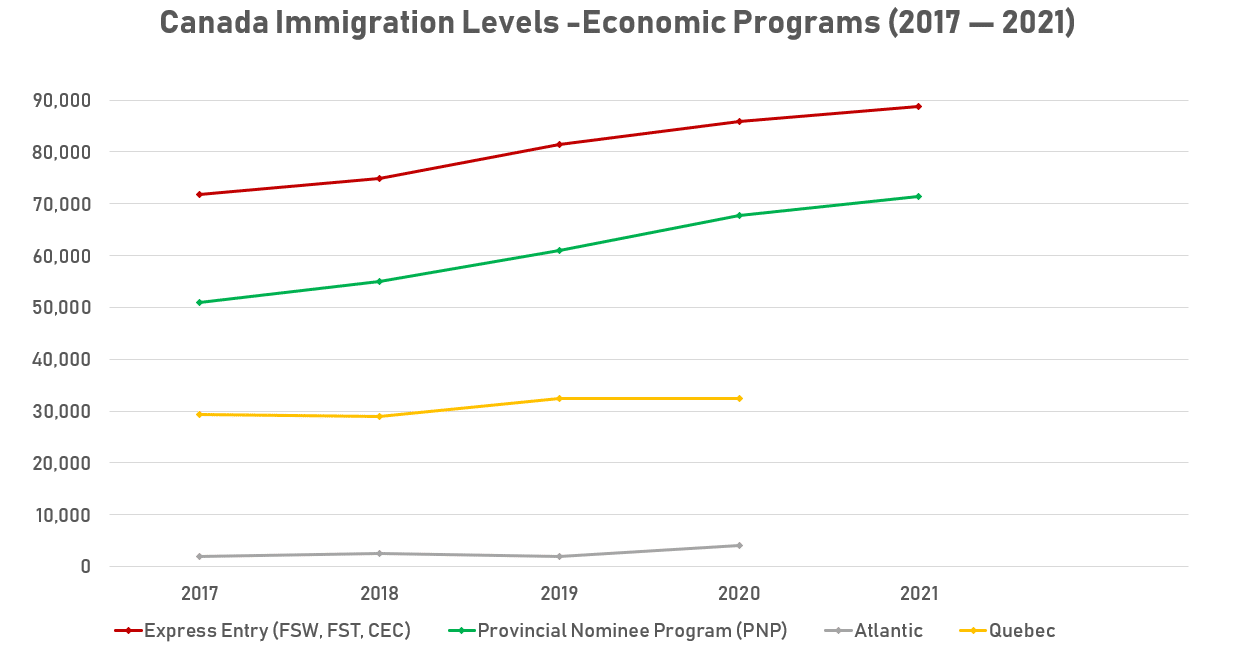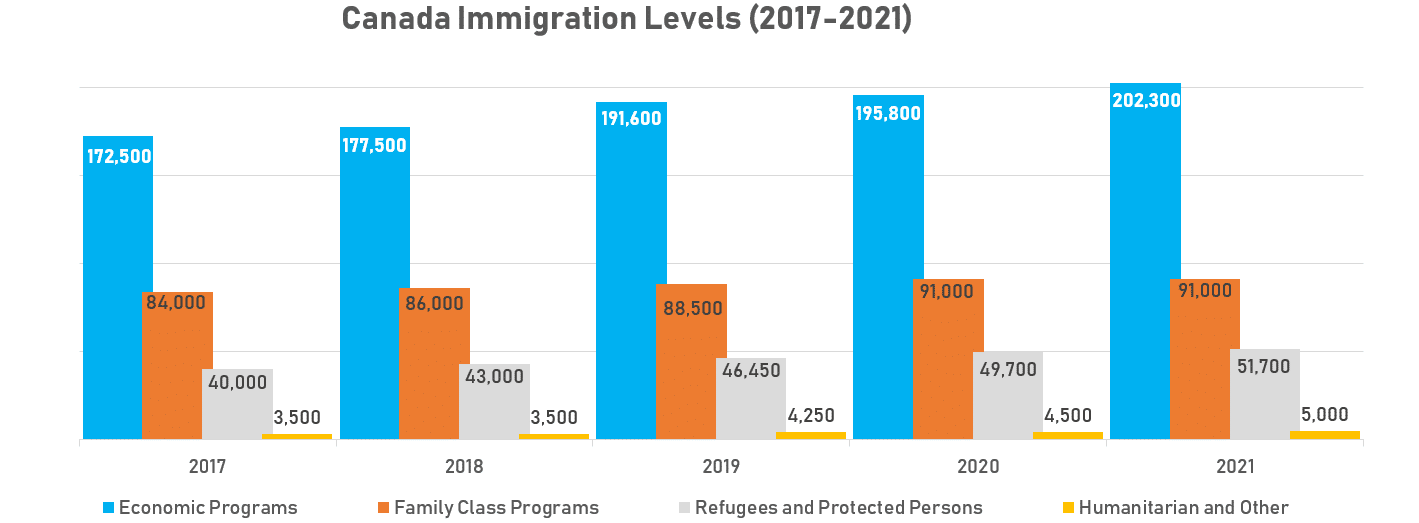Canada extends immigration targets into 2021 with prominent roles for Express Entry, PNPs
Pour lire cet article en français, cliquez ici.
Canada is increasing its immigration targets for 2019 and 2020 and will extend its multi-year immigration levels plan through 2021, setting the stage for the arrival of 1.3 million new permanent residents between 2018 and 2021.
The changes were announced as part of Immigration, Refugees and Citizenship Canada (IRCC)'s 2017 report to Parliament that was made public October 31. The report coincides with the first anniversary of IRCC's original multi-year levels plan, which was introduced to guide Canada's immigration planning from 2018 through 2020.
Increasing targets and extending the plan by another year positions Canada to now welcome more than 1.3 million newcomers through the country's various economic, family and refugee and humanitarian immigration categories between 2018 and 2021, based on its annual targets.

The new 2019-2021 plan calls for gradually increasing admissions targets each year up to 350,000 in 2021. The targets for 2019 and 2020, originally set at 330,000 and 340,000, respectively, have now been increased to 330,800 and 341,000.
"Under this plan, Canada will welcome more talented workers with the skills and expertise our economy needs, reunite more family members and accommodate more refugees looking to start new lives," Canada's Minister of Immigration, Refugees and Citizenship, Ahmed Hussen, said in his introduction to the report.
Prominent roles for Express Entry, Provincial Nominee Programs
The economic immigration programs managed by the federal Express Entry economic system and Canada's Provincial Nominee Programs (PNPs) will continue to play important roles under the plan, which expands the potential number of admissions through each program in 2019.
The Express Entry system manages the pool of candidates for Canada's three main federal economic immigration categories — the Federal Skilled Worker Class, Federal Skilled Trades Class and the Canadian Experience Class.
Of the 1.3 million new permanent residents that Canada is planning for by the end of 2021, nearly a quarter — 331,000 — are projected to come through the three economic immigration classes managed by Express Entry, based on their annual targets.
To find out if you are eligible to enter the Express Entry pool, fill out a free assessment.
PNPs, meanwhile, have a combined target of 255,100 over the four years, which accounts for almost 19 per cent of the 1.3 million total admissions over that period.
These programs allow participating Canadian provinces and territories to nominate a set number of immigration candidates for permanent residence each year based on local labour market needs.
Looked at year-over-year, PNP admissions grow from nearly 18 per cent of the overall admissions target for 2018 to 20.2 per cent of overall admissions target for 2021.
Hussen highlighted the role of PNPs in IRCC's extended immigration levels plan, noting that it was "developed in close consultation with provinces and territories, allowing them to bring in more people through their provincial nominee programs."
- Looking for more information on Canada’s Provincial Nominee Programs? Use the interactive Canada PNP Finder to explore programs, filter your search, and keep up to date on all PNP-related news.

Economic immigration programs as a whole will be responsible for the majority of newcomers between 2018 and 2021, with around 60 per cent of the 1.3 million new permanent residents arriving through one of Canada's Economic Class programs. Other programs in this class include the Atlantic Immigration Pilot and economic immigration programs administered by the province of Quebec.
Hussen said this emphasis on economic immigration addresses the "new challenges" that Canada is facing today, namely an aging population and a declining birth rate.
"Growing immigration levels, particularly in the Economic Class, will help us sustain our labour force, support economic growth and spur innovation," Hussen says.
Notably absent from the Economic Class targets in the updated immigration levels plan were targets for Quebec, which are listed as "to be determined."
IRCC attributed this to the recent general election in Quebec, which saw the province's Liberal government fall to the Coalition Avenir Québec.
IRCC said the timing of the election meant Quebec’s planned levels for 2019 and beyond could not be finalized in time to be included in the updated plan, and will be established in consultation with the new government.

Potential Family Class admissions expanded
The immigration levels plan also reflects the federal government's stated commitments to family reunification.
IRCC is expanding the range of potential admissions through its spouses, partners, and children sponsorship category while maintaining its targets for 2018 through 2020. The target for 2021 through this category is 70,000.
IRCC also expanded the range of potential admissions through its Parents and Grandparents sponsorship program but will maintain its established targets for 2019 and 2020 (20,500 and 21,000, respectively). The admissions target for this program in 2021 is set at 21,000.
"All in all, Canada's extended immigration levels are good news for people looking for opportunities to start a new life in this country," said David Cohen, senior partner with the Campbell Cohen Canadian immigration law firm in Montreal.
"In a world that seems to be closing its doors to immigrants, this plan reminds us that Canada remains a welcoming beacon of hope."
To find out if you are eligible for any Canadian immigration program, fill out a free assessment.
© 2018 CICNews All Rights Reserved
- Do you need Canadian immigration assistance? Contact the Contact Cohen Immigration Law firm by completing our form
- Send us your feedback or your non-legal assistance questions by emailing us at media@canadavisa.com






